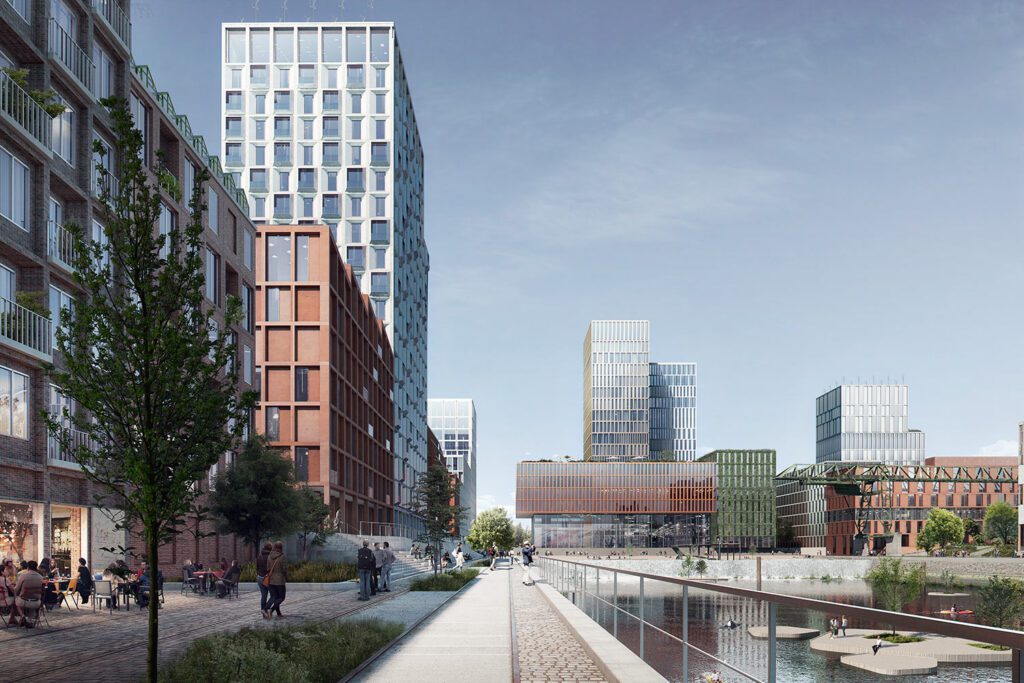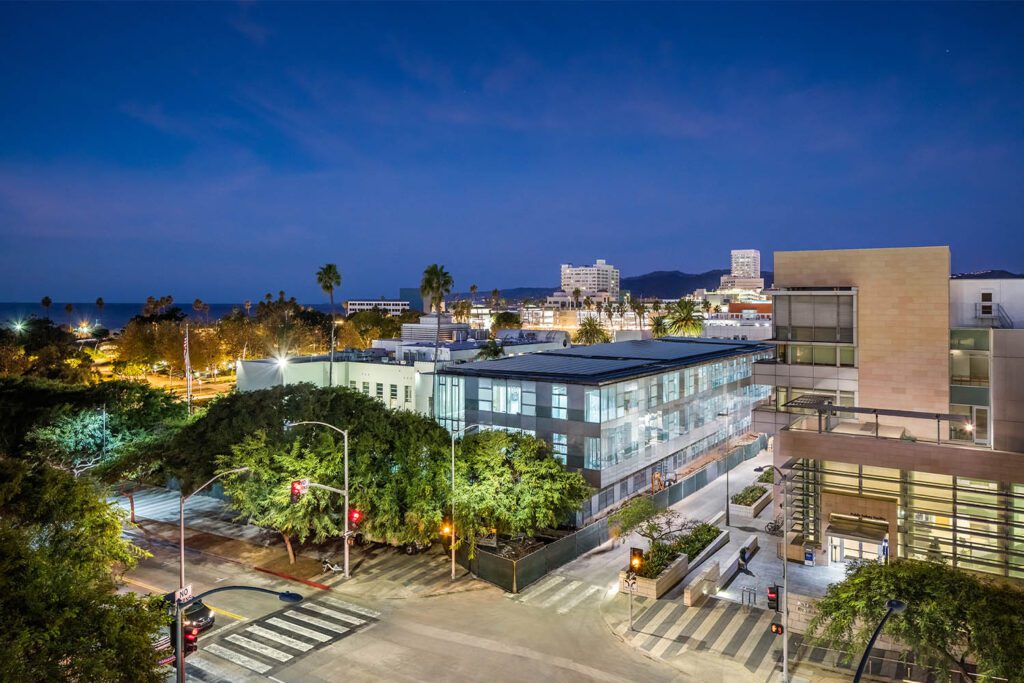GSR21: climate change
Another year has passed, and we have clearly not resolved the climate crisis. From US wildfires to extreme flooding in Belgium, Germany, Sydney, New York, and China’s Henan Province, unprecedented snowfall in Spain to cyclones in Fiji and Indonesia, communities are being harmed at a rapidly increasing rate.
Increasing pressure and risk to food security, access to medicines, and changing disease patterns1 are just some of the dangers communities are currently facing. Not to mention the habitat and biodiversity loss as a result of these extreme weather events is destroying ecosystems.
Current policies in place around the world are projected to result in about 2.9°C warming above pre-industrial levels. Even if all current Paris agreement climate pledges are met, the world is expected to experience a temperature rise of about 2.4°C by the end of the century2. We have reached the point where we must not only continue to fight climate change but must accept that natural disasters will occur with increasing frequency. Resilient design must be incorporated into climate action strategies in every instance.
It is unequivocal that human influence has warmed the atmosphere, ocean and land… Unless there are immediate, rapid and large-scale reductions in greenhouse gas emissions, limiting warming to close to 1.5°C or even 2°C will be beyond reach.”
UNIPCC Sixth Assessment Report
What needs to happen?
We have the intelligence and the technologies necessary to correct this now. Decarbonising our buildings, infrastructure, and energy supply must be achieved in a manner that provides all communities equal access to affordable and clean energy. So what can we do?
Consider whole-life carbon
Decarbonisation must take into account the embodied energy in our construction materials and processes, in addition to the operational energy used to power our buildings. Embodied energy is still not fully incorporated into the design process, and we must all ‘wake up’ to the fact that the best way to avoid emitting embodied carbon is to make better use of our existing building stock and reuse existing materials; this should be an established step in early design stages.
When new materials cannot be avoided, designers must prioritise the specification of products and materials that have third-party verified Environmental Product Declarations (EPDs), which disclose the amount of embodied carbon emitted in the manufacturing of the product.
Lower energy demand, then decarbonise it
Do we really need to use this much energy? The first step must be to lower energy demand in our buildings as much as possible, and then decarbonise the fuel sources. However, full decarbonisation will not be achieved working in silos. We must urge research institutions to explore emerging technologies jointly, encourage manufacturers to develop equipment such as heat pumps, and push for policies that encourage and support these new technologies.
Put resilience at the heart of design
The risk from flooding, storms and other natural disasters has increased, even in regions where it wasn’t an issue in the past. Our engineers must offer clients the most resilient strategies and encourage them to invest in these solutions. The standards to which we must design have changed and mitigated the increasing risk from natural disasters must be a core driver in design decisions.
Above all this, we must continue to place local communities at the forefront of our design decisions. All humans feel the impact of climate change, and everyone must be considered and involved in the solutions.

What are we doing about it?
At Buro Happold, it is our responsibility to advocate for the most sustainable, resilient, and low carbon option in all projects. While we are willing to admit that the absolute best solution is not always taken forward, we recognise that it is always our responsibility to advocate for the best.
With COP26 being held in Glasgow this year, we are engaged in a number of industry initiatives that demonstrate how the built environment can be a transformational force in addressing the climate and biodiversity emergency.
Industry initiatives
World GBC’s Beyond the Business Case
Aimed at the global real estate sector, this report aims to drive investment in sustainable buildings. Buro Happold is a project partner and task group member for this narrative that illustrates the implementation of sustainability strategies from actors across the value chain, demonstrating a range of geographies, typologies and industry stakeholders. Due to launch at COP26.
UKGBC’s Net Zero Whole Life Carbon Roadmap
Buro Happold sits on the steering group and task groups of the UKGBC’s Net Zero Whole Life Carbon Roadmap. The report, also due for launch at COP26, aims to establish clear sector-based carbon allowances, targets and actions as well as build widespread industry buy-in to the pathway laid out.
RIBA and Architects Declare’s Built for the Environment and the Built Environment Summit
A message from the international built environment sector to governments. Built for the Environment, written by Buro Happold on behalf of RIBA and Architects Declare will be presented at COP26 and at RIBA’s Built Environment Summit.
Endorsed by organisations including C40 Cities, the Global Alliance of Buildings and Construction, and the World Green Building Council, the report proposes that by looking at the built environment as a system, and by leveraging the ability of governments to provide not only regulation but also infrastructure and support, we can unlock the sector’s complex and interdependent systems, and facilitate the change required to meet our collective 1.5°C target.
SEC Campus and Clyde Mission Masterplan
The Scottish Event Campus (SEC) is a key host venue for COP26. Buro Happold has carried out its zero carbon energy strategy that includes district heating/ ambient loop, heat pumps, and modifications to existing building systems. We are also delivering the master plan for renewable and low carbon energy projects in the wider Clyde Mission area.
Projects that put sustainability first
Over the past year, Buro Happold has advocated for the most sustainable solutions wherever possible. Here’s a selection of some of our most transformative projects:
C40 Cities – Clean Construction Deep Dives
The first in a series of Clean Construction deep dives. These studies support cities in delivering the transition to resource-efficient, whole-life, net zero building, and zero emissions construction sites. Toronto is the first in a series of six cities that is providing local, actionable advice to help its city leaders make the case for clean construction, as well as offering guidance to other cities around the world.
C40 Cities — Buildings Technical Support Technical support to inform the development of 26 cities’ Climate Action Plans across Asia, Africa and South America
This work focused on decarbonisation policies and programmes for new and existing buildings, driving urban action that reduces greenhouse gas emissions and climate risks, while increasing the health, wellbeing and economic opportunities of urban citizens.
C40 Cities — Guide to Writing a Paris Agreement Compliant Climate Action Plan
A guidance document for writing climate action plans compliant with the Paris Agreement. The guide provides cities and communities with essential support, covering technical content, stakeholder engagement, structure and key messaging.
Los Angeles County Climate Vulnerability Assessment
The Los Angeles County Climate Vulnerability Assessment identifies the people, systems, infrastructure, and places that are most vulnerable to the increasing impacts of climate change. The assessment will serve as the foundation for future adaptation planning, advocacy, and community resilience efforts across Los Angeles County.
CommuniHeat
CommuniHeat’s ambition is for Barcombe to become the first net zero village in the UK. This pilot project is a model for how rural communities in the UK can take ownership of their energy and switch to a low-carbon heating system over the next 10 years, in a way that ensures comfort, affordability and a smooth transition for all. This project is a partnership between Barcombe, local energy group Ovesco, Buro Happold and UK Power Networks.
Royal London Asset Management
We are working with RLAM as strategic consultants to develop a robust sustainability framework and strategy for their new-build and refurbishment real estate development funds. We are devising solutions to track and review developments in a visual way and to ensure a robust reporting system is put in place to challenge and drive continual improvements. New guidelines, actions, and procedures help design teams understand and implement the standards. By reviewing developments in construction, we are showcasing best practice as well as reporting sustainability performance through industry-recognised benchmarking schemes.
A key step towards addressing the whole-life carbon of our buildings is to understand the amount of embodied carbon in our existing buildings and that associated with all new construction and major renovation projects. To better allow designers to quantify the embodied carbon of our designs, we developed an LCA-toolkit within Buro Happold’s own Building and Habitats objects Model (BHoM), an open-source platform for code collaboration and co-creation for the AEC industry.
The LCA-toolkit provides a flexible structure for performing LCA by linking open-source LCA data with high-fidelity BIM information, helping the user calculate embodied carbon with ease. Currently supporting Rhino and Revit geometry input, the tool is useful for early comparative design studies, as well as approved for submission for ILFI programs including Net Zero Carbon and the Living Building Challenge. Notably, the LCA-Toolkit project won the AIA Technology in Architectural Practice (TAP) Innovation Award in 2020.
Cold Climate Electrification
US policy has moved at a rapid pace to increase Renewable Portfolio Standards state by state. Buro Happold has examined and analysed decarbonisation through building electrification in order to reduce operational carbon. Conversations with manufacturers demonstrated the necessity of improving heat pump technologies across cold climates, further providing solutions for fossil fuel-free heating. Continuing relationships with the Rocky Mountain Institute, the Illinois Clean Energy Trust and the Massachusetts Department of Energy Resources (DOER) focused our climate policy knowledge into project implementation, notably One Boston Wharf Road in the Boston Seaport, a 3 million ft2 mixed-used development near Kendall Square in Cambridge, MA, plus other confidential office and laboratory projects.
Building Energy Decarbonisation Plans
Greater Manchester’s public sector organisations are making progress with decarbonising their estate. GM partners received £78m Salix’s Public Sector Decarbonisation Scheme 1 (PSDS 1), to fund energy interventions that will decarbonise over 150 public sector buildings. GMCA realised that the partners were lacking an evidence-backed action plan to achieve carbon neutrality by 2038. Buro Happold was commissioned by GMCA to create Building Energy Decarbonisation Plans (BEDP) for the PSDS 1 public sector partners. The Plans provide partners with the necessary data insights and tools as well as setting out a standardised approach that could be replicated across partners, which puts us in a much stronger position for collaborative working.
Each BEDP describes how the partner intends to replace fossil fuel reliant systems with low carbon alternatives. The Plans come with a toolkit that provides users with the ability to define their own decarbonisation pathway together with the impact of cost and carbon savings. Once implemented with the recommended carbon pathway, GMCA public sectors will be on track to meet carbon neutrality targets by 2038.
References
- https://www.who.int/news-room/fact-sheets/detail biodiversity-and-health
- https://climateactiontracker.org/global/temperatures/







